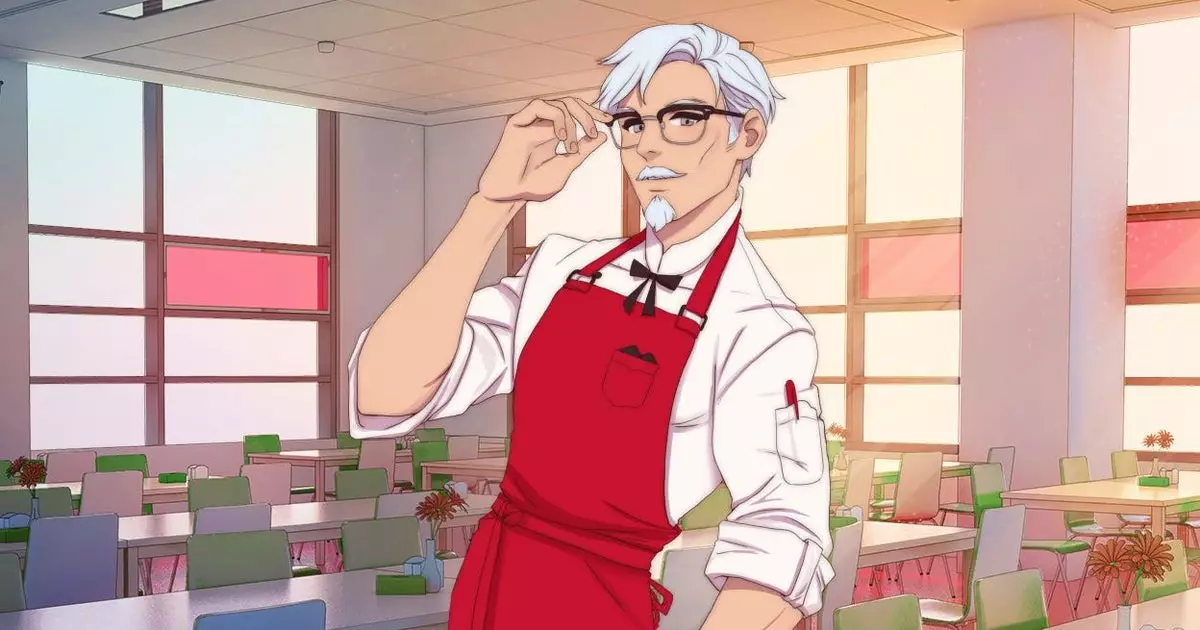As the gaming industry continues to evolve, the creative process behind character design has become increasingly unpredictable. One particularly amusing anecdote stems from Katsuhiro Harada, the long-time producer of the beloved Tekken series, and his attempts to infuse the game with a rather unconventional addition: KFC’s iconic Colonel Sanders. This interesting proposition was reportedly met with resistance, yet it opens a window for exploring how corporate mascots could revolutionize character selection in fighting games like Tekken 8.
While the idea of incorporating Colonel Sanders might have felt outlandish at first, it sheds light on a broader question in character design: what makes a character resonate with a gaming audience? Characters like Colonel Sanders, representing recognizable brands, can evoke nostalgia and humor, yet their acceptance in a traditionally serious fighting game genre raises doubts about appropriateness. Game designer Michael Murray noted this friction during a discussion regarding the character’s potential, emphasizing that even familiar faces can intimidate corporate decision-makers, prompting them to question the character’s place in a violent setting.
The underlying dilemma suggests that integrating corporate mascots may involve navigating sensibilities around how brands are represented and whether their personas can mesh harmoniously with the fighting game’s narrative landscape.
Imagining an engaging roster for Tekken 8 invites a plethora of possibilities. For instance, consider the grinning Philadelphia Flyers mascot, who, despite being an emblem of ice hockey, could serve as a whimsical and agile fighter in the ciphered conflict of Tekken. His vibrant character could incorporate a unique move set that reflects his energetic persona, challenging the conventional norms of fighting game characters.
Another prospect could be Mr. Muscle, a cleaning product mascot that has undergone various iterations through the years. The modern version, clad in bright orange spandex, could represent contemporary ideals of masculinity while providing comedic relief. Alternatively, reviving the ‘90s incarnation, a lanky figure in boxing shorts, might introduce a quirky aspect to the overall dynamics of character build, showing that diversity in aesthetics can be both entertaining and appealing.
Harking back to the broad potential of creative interpretations, certain characters—even with dimensions that might complicate their designs—could fit seamlessly into Tekken’s eclectic mix. A character derived from a playful take on femininity, with exaggerated features and flashy accessories, could further enhance the game’s representation of diverse female fighters. The blend of fashion with combat could yield a fascinating new fighter whose looks and abilities intertwine skillfully with Tekken’s signature style.
Gaming narratives are pivotal in establishing a player’s connection to their characters. This invites us to strategize beyond mere aesthetic appeal, delving into existential backgrounds and captivating storylines. For instance, envision a side quest featuring the Andrex Puppy, able to launch comical yet formidable attacks using an arsenal of toilet paper rolls. Such a character could present the intersection of playfulness and underlying strategy, enlivening the Tekken universe with fresh gameplay mechanics rooted in absurdity.
Moreover, the playful side banter between characters could evolve further. Incorporating unique puns and self-referential humor would allow players to enjoy a lighter atmosphere amid intense showdowns—finalizing a humorous tag like “King of the Iron Fish Tournament” could enhance the engagement, emphasizing creativity while honoring traditional narrative elements.
The exploration of corporate mascots transcends mere novelty as a potential method to reinvigorate character design in video games. By questioning boundaries, redefining brand representations, and prioritizing story and gameplay mechanics, we open a canvas ripe for innovation. Characters such as Colonel Sanders may not have made their Tekken debut, but the broader implications of conceptualizing unconventional figures implore game developers to continue pushing creative boundaries. Ultimately, marrying corporate identities with interactive entertainment can produce a gaming experience that is both riveting and unexpectedly delightful. Embracing creativity and disparate influences may well be the key to a successful future in character design within the ever-expanding realm of video games.

